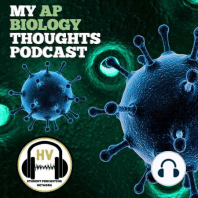11 min listen
Allopatric vs. Sympatric Speciation
ratings:
Length:
5 minutes
Released:
Jan 20, 2021
Format:
Podcast episode
Description
My AP Biology ThoughtsEpisode #9Welcome to My AP Biology Thoughts podcast, my name is Adrienne and I am your host for episode 9 called Unit 7 Evolution: Allopatric vs. Sympatric Speciation. Today we will be discussing the differences between allopatric and sympatric speciation and I will provide examples for each.Segment 1: Introduction to Allopatric & Sympatric SpeciationSpeciation: formation of a new species, occurs when a group of organisms isn’t capable of interbreeding and producing viable offspring anymoreAllopatric speciation: occurs through geographical isolation like a physical geographic barrierSympatric speciation: occurs without a geographical barrierDriven by other factors: habitat differentiation and sexual selection. Segment 2: Example of Allopatric & Sympatric SpeciationAllopatric speciationEx. Isthmus of Panama: narrow strip of land that causes a geographical barrier between Caribbean sea and Pacific oceanTwo species of porkfish have emerged Sympatric speciation: 2 types (prezygotic and postzygotic barriers)Prezygotic barriers: before the sperm and eggHabitat: different times of year organisms reproduceEx. 2 related frog species, Rona aurora breeds earlier in the year than Roma poyilil making them unavailable for each other Behavioral: set of certain behaviors that must be executed to reproduceEx. New Birds of Paradise and Birds of Paradise have different courtship characteristicsMechanical: the sexual parts must fit like a “lock” and “key”Ex. 20 different species of Bush Babies, different sexual parts won’t fit and allow reproductionGametic isolation: if the gametes are incompatible, the organisms won’t reproduceEx. Cells of red and purple sea urchins are genetically incompatible, fertilization is impossiblePostzygotic barrier: after sperm and eggInviability: organism dies before reproductionInfertility: organisms can’t form gametesBreakdown: F2 generation doesn’t sexually develop properlyEx. Horses and donkeys
Released:
Jan 20, 2021
Format:
Podcast episode
Titles in the series (100)
Miller and Urey Experiment by My AP Biology Thoughts
